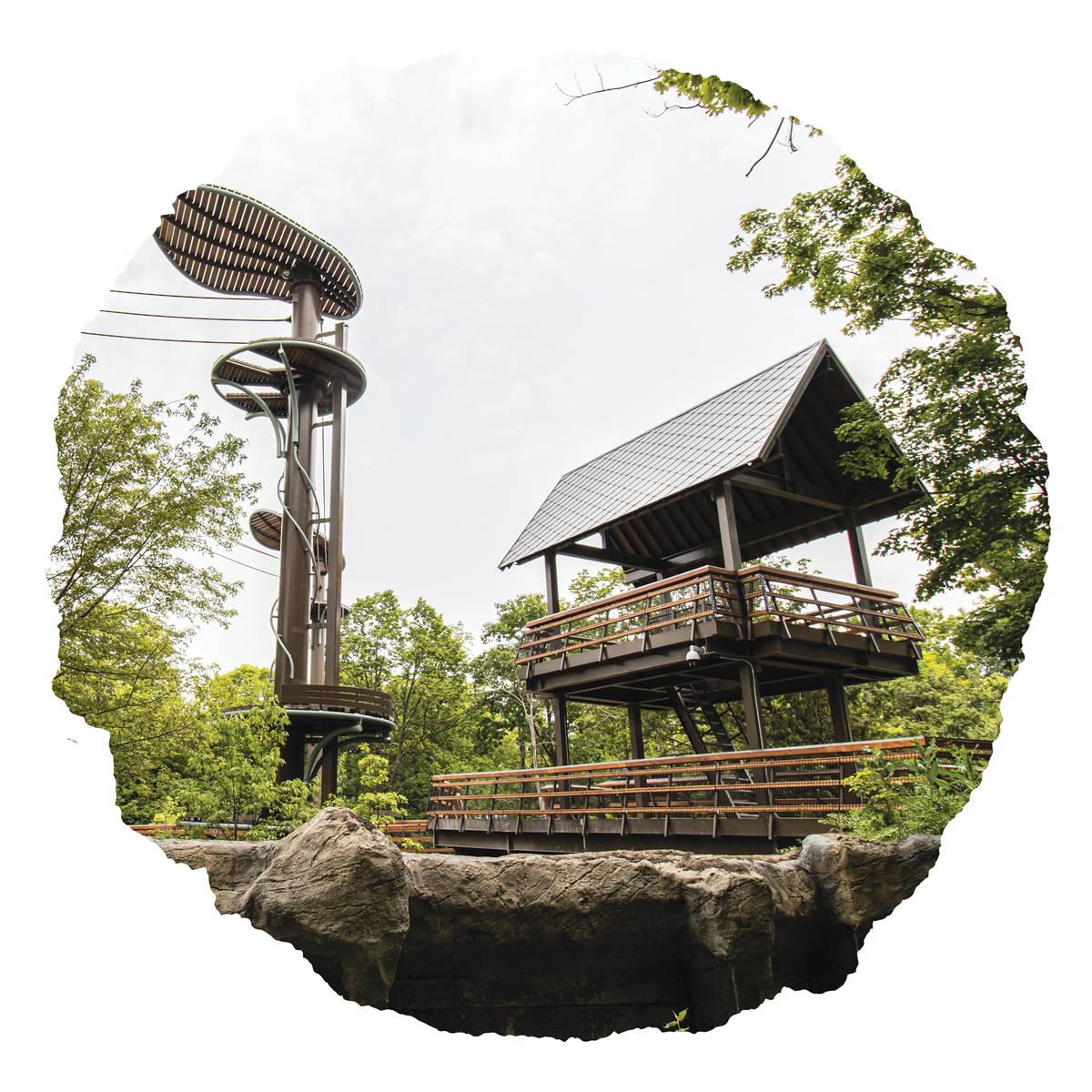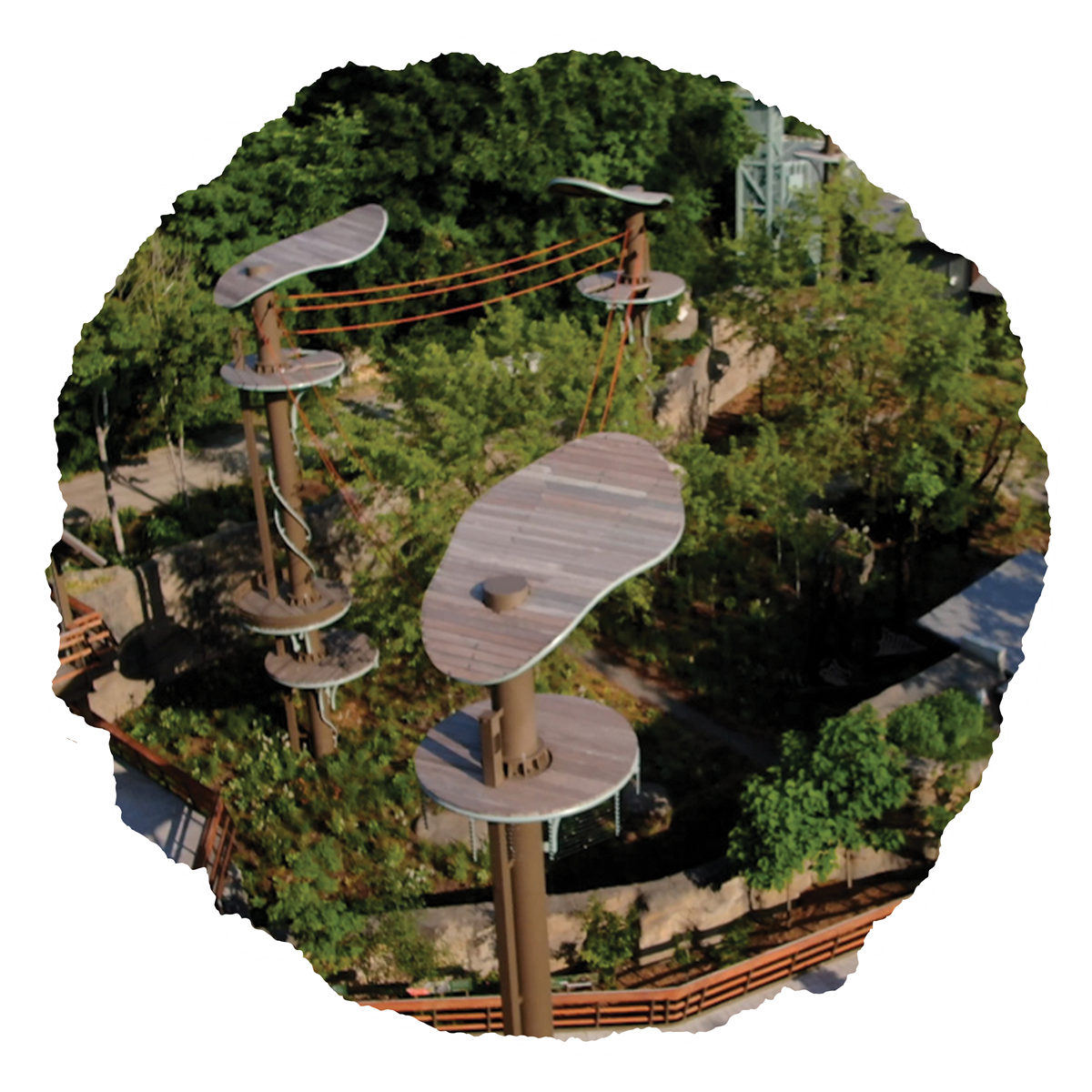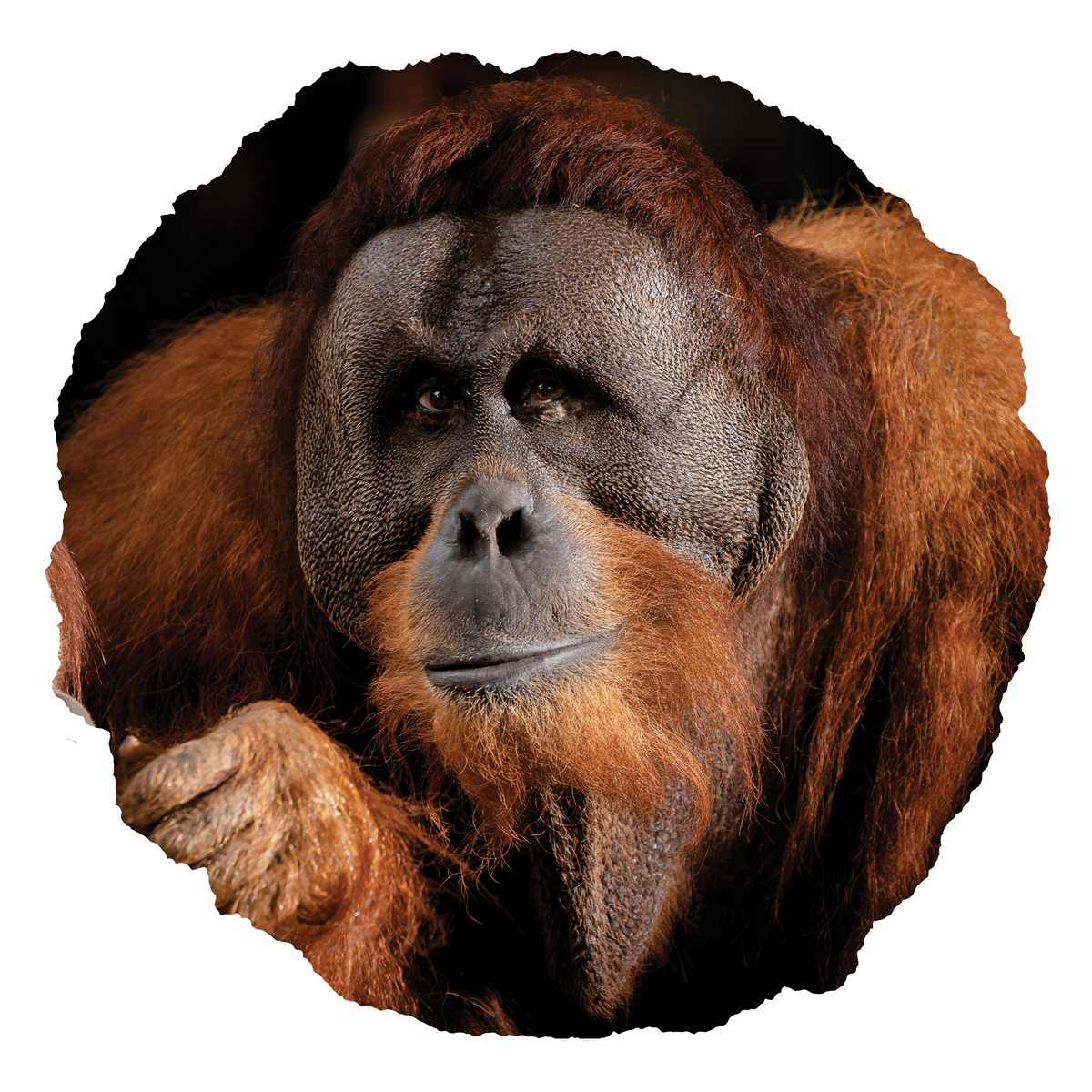TORONTO, ON, Friday, June 30, 2023: Your Toronto Zoo is swinging into the summer season with some exciting news: the GRAND OPENING of our brand new, state-of-the-art Sumatran orangutan outdoor habitat! Officially named Orangutans of Gunung Leuser, Guardians of the Rainforest after the Leuser National Park which is home to 85% of the remaining Sumatran orangutans in the wild, the NEW habitat was unveiled this Wednesday at a VIP and donor event complete with traditional dance performances from members of the Indonesian community. This new habitat is officially open to guests starting TODAY!
|
Toronto Zoo Board of Management Chair, Paul Ainslie; Consul General of the Republic of Indonesia, Ms. Dyah Lestari; Executive Director, Toronto Zoo Wildlife Conservancy, Beth Gilhespy; CEO, Toronto Zoo, Dolf DeJong; City of Toronto Deputy Mayor, Jennifer McKelvie; and members of the Indonesian community.
|
The Toronto Zoo Wildlife Conservancy’s Reaching New Heights for Orangutans Campaign enabled your Toronto Zoo to complete the construction of this new outdoor habitat for the seven orangutans in our care. Dedicated supporters, including The City of Toronto, Compass Group Canada, the Lawrence Schafer Foundation, Juan and Stefania Speck and many others, made impactful donations totalling $5.3 million that helped bring this project to life. Yesterday’s event was a perfect opportunity to thank donors for their generous contributions, without which the habitat would not have been possible.
"A project of this scope was one we had initially only dreamed about becoming a reality," says Beth Gilhespy, Executive Director, Toronto Zoo Wildlife Conservancy. "It's because of our generous donors that the orangutans in our care have this magnificent new space to call home, which mimics their wild habitat offering them new enriching experiences and choices."
|
|
|
|
|
Under construction since 2020, this new outdoor habitat was built to stimulate the orangutans' physical, social, and intellectual needs. The seven Sumatran orangutans that call the Toronto Zoo home will slowly be introduced to this new 13,000sq ft space, each at their own pace and comfort level. Once they are settled in, they will be able to climb up to 75 feet in the air and feel the breeze as they look out over the treetops of the Rouge Valley. And if you come to visit their new home and they are not quite used to their new space yet, don’t worry, they still have their familiar indoor habitat that they love to explore!
|
|
|
Integrated into the new space will also be a research station where animal behavioural scientists can study these majestic tree dwellers, known as the "Guardians of the Rainforest." At the new habitat, guests can also find out how they can help this critically endangered species by shopping smart and learning more about sustainable palm oil.
“This new habitat is a physical representation of our mission of connecting people, animals and wildlife to help fight extinction” says Dolf DeJong, CEO, Toronto Zoo. “It was so important to us that guests leave feeling empowered to create change to help this critically endangered species by making small adjustments in their day-to-day lives. We are delighted the day has come where we can welcome guests to experience the new space, and to see them, save them.”
|
|
|
|
Countless plants and animals rely on the rainforest for their survival. The rainforest holds significance for humans as well. The decisions we make can have a profound impact on the fate of the orangutans in Gunung Leuser and the diverse array of species that call the rainforest their home, including human beings.
Palm oil is one of the most versatile plant oils on the planet and is found in numerous ingredients used in cosmetics, food, personal care, and cleaning products. Indonesia is the largest exporter of palm oil globally, and millions of farmers and their families rely on this sector for their livelihoods. With its high yield and economic significance, palm oil plays a vital role in the region's economy. However, along with its benefits comes an equal danger to the rainforest.
|
|
|
|
Palm oil cultivation has been a significant driver of deforestation in the world's only orangutan habitat. The clearing of biodiverse rainforests for oil palm plantations has been the leading cause of deforestation in Indonesia over the past two decades, even encroaching into national parks, wildlife sanctuaries, and protected sites.
|
A significant part of the new habitat is guests learning more about how they can help this critically endangered species by shopping smart and learning more about sustainable palm oil.
Immediate action is necessary to protect the remaining orangutan habitats, and as consumers, we can make a difference by becoming informed shoppers and choosing products made with only SUSTAINABLY sourced palm oil. Supporting the transition to only SUSTAINABLE palm oil helps safeguard farmers, protect the rainforest and wildlife, and contribute to poverty reduction.
By making conscious choices during your shopping trips, you actively contribute to the conservation of orangutans, including those in Gunung Leuser National Park in Sumatra, as well as numerous other species.
|
|
|
The Sumatran Orangutan Habitat at the Toronto Zoo, designed by Zeidler Architecture in association with Jones & Jones Architects + Landscape Architects, offers a unique and immersive experience for both visitors and orangutans.
Inspired by the natural habitat of Borneo, the design meticulously recreates an environment that reflects the orangutans' natural lifestyle. The habitat features climbing structures, varied terrain, a waterfall stream, and strategically placed elements to enhance the animals' experience. Elevated walkways and platforms provide visitors with captivating vantage points, allowing them to observe the orangutans as they explore their surroundings. Interactive spaces, including a special viewing spot where orangutans playfully spray water at visitors, fostering a sense of engagement and playfulness. The habitat serves as a reminder of the importance of habitat protection while providing an unforgettable experience for all who visit.
|
In 2017, the conservation status of Sumatran orangutans was changed from Endangered to Critically Endangered by the International Union for Conservation and Nature (IUCN). Today, fewer than 15,000 Sumatran orangutans can be found in the wild. Approximately 95% of these orangutans live in the Greater Leuser Ecosystem on the Indonesian island of Sumatra.
In 2022, your Toronto Zoo and the Toronto Zoo Wildlife Conservancy committed to a long-term partnership with PanEco Foundations’ Sumatran Orangutan Conservation Programme (SOCP). Thanks to generous donations made to the Toronto Zoo Wildlife Conservancy, the Toronto Zoo will provide $250,000 over ten years to support orangutan conservation in the wild, furthering the Toronto Zoo's conservation impact worldwide. Like the new outdoor habitat, donations to the Toronto Zoo Wildlife Conservancy have made this partnership possible.
Long-term support is invaluable to the work being done by the SOCP, since knowing they have funds coming in year after year allows them to better plan their conservation activities to be more effective and impactful, to react promptly to new challenges when they arise, and to new opportunities, knowing they have the resources available.
To learn more or donate, please click the button below.
|
Where are the orangutans?
When introducing any animal to a new space it is important to go slowly and observe the animals to ensure it is as positive as possible. This means letting them explore this new space on their own time. We have seven Sumatran orangutans in our care at your Toronto Zoo, each with their own personalities, likes and dislikes, which means each one will have a different journey and will experience the various new habitat elements with their own lens. This will be their new summer home and it’s important that they are given the opportunity to explore it with as few distractions as possible.
This is an example of our “animals first” approach to care. They are given choice and control of their environment, and we train using positive reinforcement training, which they can choose not to do. They’ve been very curious and interested in the work being done, and we’re optimistic that before too long we’ll have them out there enjoying the space. In the meantime, you can still visit them in their indoor habitat!
|
|
|
|
|
Check out the media toolkit! To access and download exclusive drone footage and construction time-lapse click the link below.
|
|
|
The Toronto Zoo’s mission is to connect people, animals and conservation science to fight extinction and our vision is a world where wildlife and wild spaces thrive.
An iconic tourist attraction and Conservation organization, the Toronto Zoo boasts a number of leading programs for helping wildlife and their natural habitats – from species reintroduction to reproductive research. A world-class educational centre for people of all ages, the Toronto Zoo is open every day including December 25 and attracts approximately 1.2 million guests each year.
Toronto Zoo is accredited by the Association of Zoos and Aquariums (AZA). The Zoo has also achieved the Canadian Council on Animal Care (CCAC) Certificate of Good Animal Practice® and is inspected by the Ontario Ministry of Agriculture, Food and Rural Affairs (OMAFRA).
Toronto Zoo, 361A Old Finch Ave, Toronto ON, M1B 5K7
View Toronto Zoo’s Privacy Statement
We acknowledge the land we are on is the traditional territory of many nations including the Mississaugas of the Credit, the Anishnabeg, the Chippewa, the Haudenosaunee and the Wendat peoples and is now home to many diverse First Nations, Inuit and Métis peoples. We also acknowledge that Toronto is covered by Treaty 13 with the Mississaugas of the Credit and the Williams Treaty signed with multiple Mississaugas and Chippewa bands.
|
© 2023 Company. Toronto Zoo All Rights Reserved.
|
|
|
|















